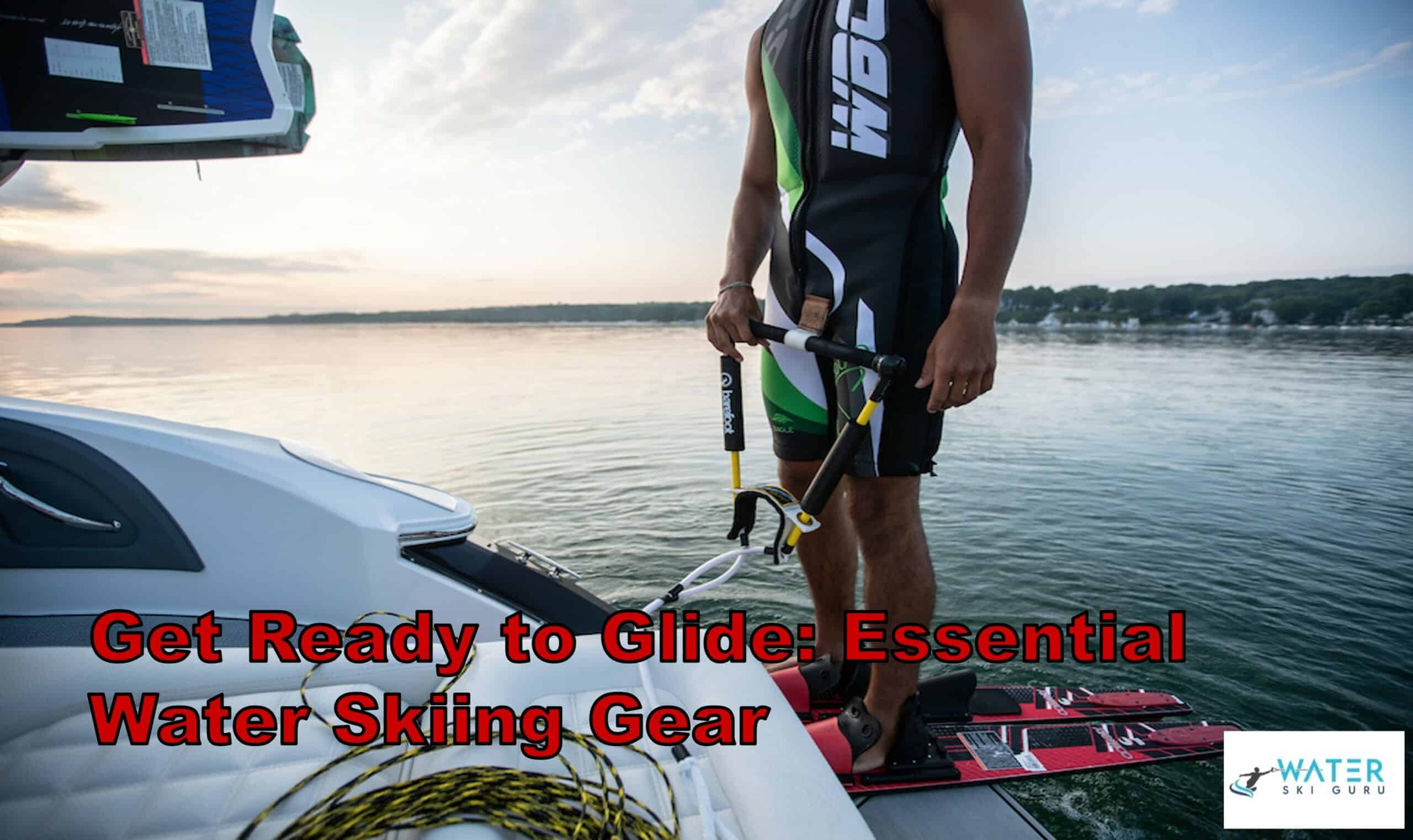Are you ready to take on the waves and experience the thrill of waterskiing? Before you hit the water, it’s essential to have the right gear to ensure your safety and enjoyment. From the skis to the ropes and handles, each piece of equipment plays a crucial role in your waterskiing experience.
As a waterskiing enthusiast, you understand the importance of having the right gear. Whether you’re a beginner or a seasoned pro, having the proper equipment will help you get the most out of your adventure.
In this article, we’ll cover everything you need to know about essential waterskiing gear, including the different types of skis, ropes, and accessories that can enhance your experience. With this knowledge, you’ll be able to hit the water with confidence and glide across the surface with ease.
So, let’s dive in and explore the world of waterskiing gear!
Equipment Needed
You’ll need a few key pieces of equipment to get started with waterskiing. First, you’ll need a boat with enough power to pull you up and out of the water. If you don’t have access to a boat, there are rental options available at many lakes and waterways.
You’ll also need an appropriate ski type for your skill level and the type of skiing you want to do. Combo skis or the HO Hovercraft are great for beginners, while slalom skis are more specific and better for more experienced skiers. When it comes to buying skis, do your research and look for reviews from other skiers to help you make an informed decision.
Next, you’ll need a waterski rope and handle. It’s important to use a rope specifically designed for waterskiing, as it will stretch and give a bit to make for a smoother ride. Look for higher quality ropes for a better experience, though be prepared to pay a bit more.
Finally, a life jacket is a must for safety and easier getting up. Be sure to get a properly fitted life jacket that fits snugly and won’t ride up. Gloves can also be a useful addition for those with hand pain.
Whether you’re renting equipment or buying your own, it’s important to have the right gear to ensure a safe and enjoyable experience on the water. Do your research, read reviews, and don’t be afraid to ask for advice from more experienced skiers. With the right equipment and a positive attitude, you’ll be gliding across the water in no time.
Types of Skis
Choosing the right ski is crucial for a successful waterskiing experience, as slalom skis are designed to reach higher speeds than combo skis. Combo skis, also known as recreational skis, are a great option for beginners, as they are wider and more stable, making it easier to balance and control. They are also easier to turn and maneuver, allowing for a more enjoyable experience. On the other hand, slalom skis are designed for more advanced skiers, as they are narrower and require more balance and control. They are designed to reach higher speeds and make sharper turns, providing a more challenging and thrilling experience.
When choosing the right ski, it is important to consider your skill level and the type of skiing you plan on doing. Below is a table that compares beginner and advanced skis to help you choose the right ski for your needs.
| Beginner Skis | Advanced Skis |
| Wider and more stable | Narrower and require more balance |
| Easier to turn and maneuver | Designed for higher speeds and sharper turns |
| Best for recreational skiing | Best for slalom skiing |
| Available in combo skis or HO Hovercraft | Available in various models based on skill level and preference |
Additionally, it is important to choose the right size ski for your weight and skill level. A ski that is too small will be harder to balance and control, while a ski that is too large will be difficult to turn and maneuver. It is recommended to consult with a professional or experienced skier to determine the best size for you. Overall, choosing the right ski is essential for a safe and enjoyable waterskiing experience.
Accessories and Extras
To enhance your waterskiing experience, consider adding accessories such as gloves or a ski mirror. Waterskiing gloves are a great addition for those with hand pain or for those who want to improve their grip on the rope. Gloves come in different materials and thicknesses, so it’s important to find the right pair for you. Look for gloves with a comfortable fit and good grip that won’t slip off during your ride.
A ski mirror is also a helpful accessory that allows you to see behind you while skiing, making it easier to communicate with the boat driver and avoid obstacles in the water.
In addition to accessories, having the right equipment is crucial for a successful waterskiing experience. When it comes to ropes and handles, it’s best to invest in higher quality brands for safety and performance. Some of the best brands for ropes and handles include Masterline, Accurate, and Proline.
You can find these brands and other options for ropes and handles at watersports retailers or online shopping sites. With the right accessories and equipment, you’ll be able to take your waterskiing skills to the next level and enjoy the thrill of gliding on the water.
Frequently Asked Questions
How fast should the boat be going when pulling a water skier?
To get started, the boat speed should be around 20-25 mph for average weight skiers. Adjust for heavier/lighter skiers and desired wake size. Remember to always prioritize safety and wear proper gear. Happy skiing!
What should I do if I fall while waterskiing?
If you fall while waterskiing, don’t panic. Keep arms straight, knees bent, and wait for the boat to circle back. Keep life jacket on and swim to the back of the boat. Avoid common mistakes like pulling on the rope too hard.
Can I wear any type of shoe while waterskiing?
As the saying goes, “proper preparation prevents poor performance.”When it comes to waterskiing, proper footwear is crucial for safety and performance. Wearing water shoes or neoprene socks can prevent slips and falls, reducing the risk of injury.
Is it safe to waterski alone?
Solo skiing precautions are essential for safety. Always wear a properly fitted life jacket and use a waterski-specific rope and handle. Consider having a spotter on the boat and inform someone of your plans.
How often should I replace my waterski rope and handle?
To ensure safety and performance, it’s important to monitor rope longevity and handle durability regularly. Replace them when they show signs of wear and tear, like fraying or discoloration. High-quality options come at a higher price but are worth it for an optimal experience.
Conclusion
So now you know all about the essential waterskiing gear you need to hit the water and glide across the surface on skis. But remember, having the right equipment is only the first step.
Safety should always be your top priority, so make sure you follow all the recommended guidelines and wear your life jacket at all times.
With the right gear and a commitment to safety, waterskiing can be an incredibly fun and rewarding experience. Whether you’re a beginner or a seasoned pro, there’s always something new to learn and exciting challenges to tackle.
So get out there, hit the water, and enjoy the thrill of gliding across the surface on your skis. Happy skiing!

